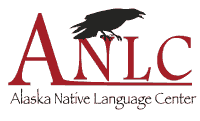Siberian Yupik

St. Lawrence Island Yupik (also known as Siberian Yupik) is spoken in the two St.
Lawrence Island villages, Gambell and Savoonga. The language of St. Lawrence Island
is nearly identical to the language spoken across the Bering Strait on the tip of
Siberia's Chukchi Peninsula.
The total Siberian Yupik population in Alaska is about 1,100, and of that number about
1,050 speak the language. Children in Gambell and Savoonga learn Siberian Yupik as
the first language of the home. Of a population of about 900 Siberian Yupik people
in Siberia, there are about 300 speakers, although no children learn it as their first
language.
Although much linguistic and pedagogical work had been published in Cyrillic on the
Siberian side, very little was written for St. Lawrence Island until the 1960s, when
linguists devised a modern orthography. Researchers at the University of Alaska in
Fairbanks revised that orthography in 1971, and since then a variety of curriculum
materials, including a preliminary dictionary and a practical grammar, have become
available for the schools. The ANLC's Steve Jacobson published a full dictionary in
2008.
Siberian Yupik is a distinct language from Central Alaskan Yup'ik. Notice that Siberian
Yupik is spelled without an apostrophe.
Common Expressions
| natesiin? | How are you? |
| esghaghlleqamken | good-bye (I'll see you) |
| igamsiqanaghhalek | thank you |
| quyanaghhalek tagilusi | welcome (thank you for coming) |
| Quyanaghhalek Kuusmemi | Merry Christmas |
Links and Resources
 Learn More:
Learn More:
Alaska is home to at least twenty distinct indigenous languages. More than just dialectal variants, these different languages reflect the diverse cultural heritage of Alaska's Native peoples. For more information about particular languages, click below.


